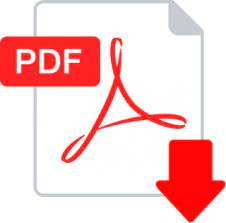PENGGUNAAN INTERJEKSI (KANDOUSHI) DALAM WEBTOON BITAASUITO NA JINSEI
DOI:
https://doi.org/10.34010/js.v8i2.3590Abstract
Abstract
The purpose of this research is (1) to find out the form of usage interjection (kandoushi) such as greeting’s form (aisatsugo), impression’s form (kandou), and response’s form (outou) in Webtoon comic translation of Bitaasuito na Jinsei in 1-2 episodes. (2) to describe the use of interjection (kandoushi) based on the context of the speaker’s situation as a pragmatic studies. This research uses descriptive method. The form of this study indicate that there are 21 interjection (kandoushi) data is used. The most often used is the impression’s form of kandoushi such as “aâ€.â€aaaâ€. and “e-“,this illustrate that people more often use kandoushi when shocked and unexpected situations.
Keywords : Pragmatic, Interjection, Kandoushi, Webtoon
Abstrak
Penelitian ini bertujuan untuk (1) mengetahui bentuk penggunaan Interjeksi (Kandoushi) seperti kandoushi yang menyatakan aisatsugo,perasaan (kandou),dan jawaban(outou) yang terdapat dalam komik Webtoon terjemahan Bitaasuito na Jinsei dalam episode 1-2. (2) mendeskripsikan penggunaan interjeksi (kandoushi) berdasarkan konteks situasi penutur sebagai kajian pragmatik. Penelitian ini menggunakan metode deskriptif dan pengambilan data dilakukan dengan teknik mencatat. Data dari penelitian ini menunjukkan bahwa ada sebanyak 21 data interjeksi (kandoushi) yang digunakan. Yang paling sering digunakan adalah kandoushi perasaan berupa keterkejutan seperti “aâ€, “aaaâ€, dan “e-“ hal ini menggambarkan bahwa orang-orang lebih sering menggunakan kandoushi pada saat keadaan terkejut dan dalam situasi tak terduga.
Kata Kunci : Pragmatik, Interjeksi, Kandoushi, Webtoon
Downloads
Published
Issue
Section
License
- Authors retain copyright and grant the journal right of first publication with the work simultaneously licensed under a Creative Commons Attribution License that allows others to share the work with an acknowledgement of the work's authorship and initial publication in this journal.
- Authors are able to enter into separate, additional contractual arrangements for the non-exclusive distribution of the journal's published version of the work (e.g., post it to an institutional repository or publish it in a book), with an acknowledgement of its initial publication in this journal.
- Authors are permitted and encouraged to post their work online (e.g., in institutional repositories or on their website) prior to and during the submission process, as it can lead to productive exchanges, as well as earlier and greater citation of published work (See The Effect of Open Access)











.jpg)

